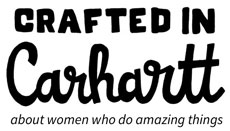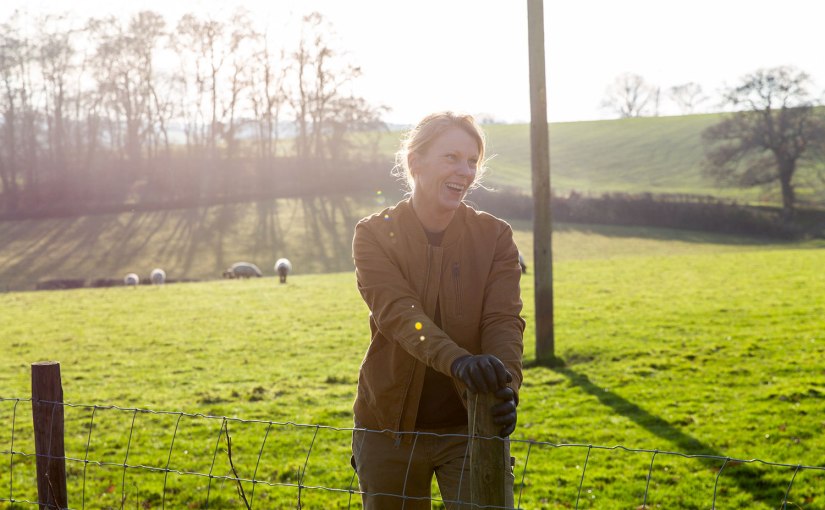For most, winter feels like an endless epoch come January and February. But this time of year on Hare Farm in East Sussex, everything and everyone are abuzz. Temperatures are still quite chilly as spring barely peaks over the horizon. In just a few days, lambing season begins. It generally lasts about 3 weeks, and over 1,700 lambs enter the world. The Howard family holds this time dearly. Not many people get to experience life multiplying in such a beautiful way.
“March. The month when new life emerges with gusto. When one pair of farm hands is multiplied by 5. When all eyes focus on the woolly kind, and when the valley turns green again.… It makes you remind yourself that, despite the tired limbs and small earnings to be made, working in the lambing sheds in the Spring is a special place to be.” -Jo Thompson
This sprawling grassland, once a hop farm dating back to medieval times, became fully dedicated to sheep in the 1990s. The pastures stretch across Brede Valley, rolling softly into marshlands and riverbeds. Several of the original structures still stand on the property. True conservationists at heart, the family restored each building with great care, using local and historically accurate supplies. The craftsmanship and perfectly positioned facets speak to how greatly tradition is honored.
A chance to experience the farm first hand is within reach in several ways:
- The folks of Hare Farm offer a lambing course every March where you can witness this natural marvel up close. Students learn through instruction, observation, and by pitching in. The in-depth class covers the full lambing cycle—from tupping to weaning, basic sheep care, and other valuable tidbits.
- The oast, where the hops were originally dried and stored from the 16th to the 19th century, is now an idyllic country home that sleeps 12. It’s available for rent as a guest house, allowing for a rare inside look at life in the countryside. As all farmers know, opening your backdoor and stepping right onto the pasture is a treasured perk of the job.
- There is even an authentic shepherd’s hut where you can camp on the land as sheep herders did during the Victorian era.
Lambing class starts March 11th this year, but there is much to be done around the farm in the mean time. Some of those tasks include: shearing expectant mother’s backsides, vaccinating the sheep, setting up 145 lambing pens—each one housing a new mother and her babies, and planting a final line of hedging.
The Howards partner with Natural England as stewards of the land. The 500 acres they call home are happily shared with neighboring wildlife. You’ll easily spot rare birds, laughing frogs, badgers, and boars. There’s no telling what creatures you’re bound to see on the property, and that’s just the way the Howards like it. Creating a healthy equilibrium between raising sheep and nurturing the environment is paramount. Hedgerows, waterways, and areas dedicated to the wild coexist with the herds.
 Jo Thompson is co-owner of Hare Farm Hideaways. The land, along with the farming lifestyle was passed down by her parents. About 7 years ago, she started a lambing class unlike any other, allowing 8 to 10 students to spend time on the farm learning straight from the farmers’ mouths.
Jo Thompson is co-owner of Hare Farm Hideaways. The land, along with the farming lifestyle was passed down by her parents. About 7 years ago, she started a lambing class unlike any other, allowing 8 to 10 students to spend time on the farm learning straight from the farmers’ mouths.
“There’s nothing like it. Farms don’t tend to open themselves up to the general public. Or if they do, hundreds of people show up. The courses I run are very hands on and helpful. It helps us educate the community and helps us promote British farming and sheep.” -Jo Thompson


Paula Gwynne began her work at Hare Farm 2 years ago, since then she’s rapidly advanced. She plays a major role during lambing season, watches over the herds, tends to the gardens, and even runs the farm when the owners are away. 





Annie Howard lives on the farm. Her many responsibilities include managing the oast guest house, bottle feeding orphaned lambs, and ensuring that everything runs smoothly.
“Lambing time is draining, both physically and emotionally. From the month’s of build up beforehand making sure each ewe is in prime condition, feeding, preparing the sheds and planning for all eventualities.
Once lambing has started, we hope for kind weather and not the challenges of rain, wind and occasionally snow. The best time is seeing a ewe leave the shed, go out into a lush, green field on a warm sunny day, closely followed by her two healthy lambs.” -Annie Howard



Caroline Maddocks is a full time crop sprayer. With five and a half years of experience, she’s quickly worked her way up the ranks. Aside from tractor driving, she diligently looks after cattle. Caring for animals is in her blood.
During lambing season, you’ll find Caroline helping out on the ground. Born and raised on a farm herself, there’s no one more suited to lend a hand as new life emerges in the valley.
“I couldn’t think of a better way to spend my life.” -Caroline Maddocks


“I remember being told that lambing time is like a marathon not a race, it’s hard physically and mentally, you need to pace yourself where you can, to be able to make sound decisions about when to intervene and to last the duration of lambing time. We work roughly 12 hour shifts every day for that duration to ensure continuity of care, so burning out early isn’t ideal. That shift is very busy, you need to keep an eye (and ears) on everything whilst carrying out all of your tasks.” -Paula Gwynnne
Paula’s advice for aspiring farmers:
- Know your fears and be prepared to manage and challenge them. Work through the low points and keep on at it. You’ll feel proud of yourself.
- Don’t give up if it doesn’t work first time, it may not be the right fit for you. I’ve been so lucky to have great mentors around me, they were definitely the difference between success and failure.
- Lastly, if you’re older like me (I’ve bought up my kids and had lost my confidence along the way) remember that you’re not past trying something new.


To find out more about Hare Farm Hideaways, click here.


















 The Taylor women have come full circle in their work and personal lives. Carolina, who began her career after seeing how the Space Needle was built, worked on the recent remodeling of the structure. Kat became a Jorneyman Ironworker in 2018 and is now herself a loving mother and a first time homeowner.
The Taylor women have come full circle in their work and personal lives. Carolina, who began her career after seeing how the Space Needle was built, worked on the recent remodeling of the structure. Kat became a Jorneyman Ironworker in 2018 and is now herself a loving mother and a first time homeowner.







 However, buying a houseboat in Amsterdam is no easy task. There are only so many allotted spaces where people are allowed to set up camp. One must be lucky enough to find a current home for sale and buy their spot on the quay.
However, buying a houseboat in Amsterdam is no easy task. There are only so many allotted spaces where people are allowed to set up camp. One must be lucky enough to find a current home for sale and buy their spot on the quay.












 Mijs has spent much of her life on boats. Before living on one, she was a boating instructor. Like many locals, Mijs has a smaller boat the family uses on weekends to cruise the canals. This summer, they’ll set off for a two week boating adventure.
Mijs has spent much of her life on boats. Before living on one, she was a boating instructor. Like many locals, Mijs has a smaller boat the family uses on weekends to cruise the canals. This summer, they’ll set off for a two week boating adventure.









 “The beer industry has been booming the last years. Many craft breweries have developed and put themselves in the market. The industry, however, is still a man’s world. In Amsterdam we are still the only woman’s beer brand (as far as I know). In the country there are a few more women who started their own beer brand.” -Fenna van Strien of Gebrouwen door Vrouwen
“The beer industry has been booming the last years. Many craft breweries have developed and put themselves in the market. The industry, however, is still a man’s world. In Amsterdam we are still the only woman’s beer brand (as far as I know). In the country there are a few more women who started their own beer brand.” -Fenna van Strien of Gebrouwen door Vrouwen








 One of the most fascinating places we visited was Zaanse Schans, a functioning saw mill in a windmill. And just in case you were wondering, some of the workers do wear wooden shoes.
One of the most fascinating places we visited was Zaanse Schans, a functioning saw mill in a windmill. And just in case you were wondering, some of the workers do wear wooden shoes.









 Shelby Newman started full time at
Shelby Newman started full time at 



 Marie Myllyla has spent the past few summers working at
Marie Myllyla has spent the past few summers working at 

















































 “I can be treated differently because of my gender, usually when I first start a new company, and not necessarily treated negatively, just different. I overcome that with mountains of patience.” -Walford
“I can be treated differently because of my gender, usually when I first start a new company, and not necessarily treated negatively, just different. I overcome that with mountains of patience.” -Walford

 “I believe if you have to tell people how great you are at something, you’re generally not that great at it. I’m not a yeller, especially with a crew I’ve never worked with. I treat everyone with respect and ask for the same in return.” -Walford
“I believe if you have to tell people how great you are at something, you’re generally not that great at it. I’m not a yeller, especially with a crew I’ve never worked with. I treat everyone with respect and ask for the same in return.” -Walford





















